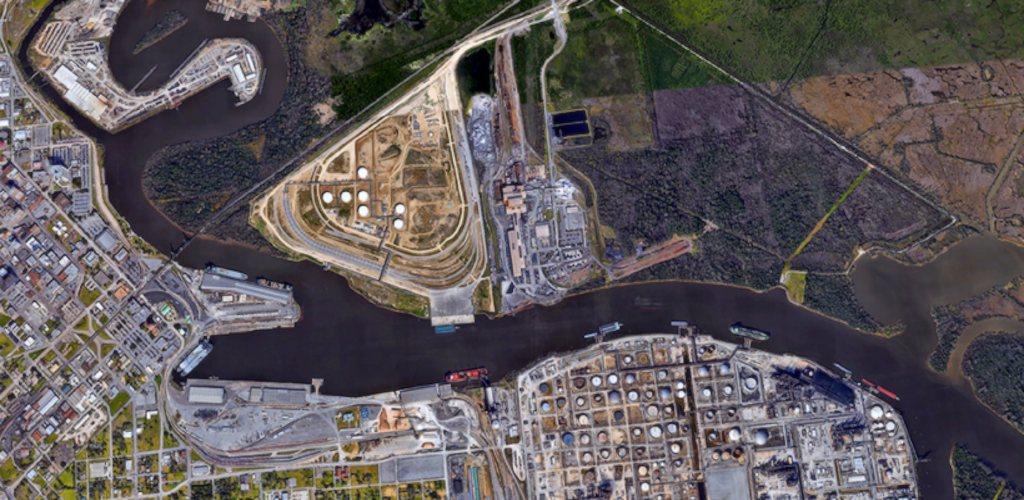May 20 | 2021
(Americas) Port of Beaumont Progresses Upgrades

By Malcolm Ramsay
With the Biden administration having approved plans for the construction of the first large-scale U.S. offshore windfarm earlier this month, the outlook for breakbulk demand is positive, but challenges remain as handling facilities across the country transform to service this new industry.
One of the key sites for breakbulk handling of offshore components on the U.S. Gulf Coast is the Port of Beaumont, where extensive upgrade work is reshaping the docks and land-side infrastructure.
“The Port of Beaumont is in the midst of a major transformation. With more than US$100 million in infrastructure improvement projects kicking off in 2021, the port you see today will look completely different by 2025,” Sadé Chick, Director at Port of Beaumont, told Breakbulk.
Infrastructure program
Supporting the transformation of ports across the country, the White House announced funding of US$230 million in March for port and intermodal infrastructure-related projects through the Port Infrastructure Development Program.
This program will support shore-side wind energy projects, such as storage areas, laydown areas, and docking of wind energy vessels to load and move items to offshore wind farms. The administration will also provide access to US$3 billion in debt capital to support offshore wind industry through Department of Energy's Loan Programs Office, or LPO.
With funding set to be provided via the LPO’s Title XVII Innovative Energy Loan Guarantee Program, the administration aims to partner with offshore wind and offshore transmission developers, suppliers and other financing partners to scale the U.S. offshore industry.
“We have handled record volumes of wind energy equipment destined to inland wind farms throughout the U.S. and Canada over the last several years and our facility works well with the oversize, large equipment utilized by wind power generation units. Offshore wind is growing consistently, and we look forward to participating in these projects," Chick said. "In 2020, the Port of Beaumont moved turbine components for 30 separate North American wind projects. We have several infrastructure projects planned that will facilitate the movement of turbine components including the construction of a second interchange track, which will go to bid this summer, as well as the construction of a new 1,150-foot general cargo dock that will increase handling capacity by more than 25 percent.”
Facilities Upgrades
Building on this momentum the Port of Beaumont has a number of new projects scheduled to start over the next 18 months
“[These] include reconstruction of two berths that will increase general cargo handling capacity by more than 50 percent, an additional rail interchange track that will double interchange capacity, and construction of a new 30-acre laydown area. In addition to these larger projects, several open storage lots will be improved or expanded. These projects will address the current dock and rail constraints at the Port. As a result of these projects, more than 50 percent of port facilities will be upgraded over the next five years,” Chick said.
Looking forward, the U.S. appears set to emerge as a major market for offshore wind development over the next five years, driving a bounce in energy sector investment that will mitigate recent losses in shale gas investment.
“We expect the U.S. economy and specifically oil prices to rebound after the recent issues with Covid. Recovery appears to be on pace to improve before year end 2021 and with that investment in infrastructure projects across the Gulf Coast will drive expansion thus creating new imports and exports,” he said.
Clear Opportunity
Under the terms of the recent White House offshore wind policy, the administration plans to create employment for tens of thousands of workers, with a new target to deploy 30 gigawatts of offshore wind by 2030.
“Nowhere is the scale of that opportunity clearer than for offshore wind. This commitment to a new, untapped industry will create pathways to the middle class for people from all backgrounds and communities,” said Gina McCarthy, national climate advisor.
The first project to be approved is the 84-turbine Vineyard Wind project, located off the coast of Massachusetts, and while much proposed development is planned for the U.S. East and Gulf coasts region is also expected to see growing investment thanks to the quality of existing infrastructure and concentration of breakbulk handling expertise.
“Many projects have been put on hold over the last year and we anticipate that Covid recovery will drive an increase in activity. We have seen record development inquiries coming through the regional economic development offices and we anticipate some of these leads becoming projects that will locate in Southeast Texas,” Chick said.
Located 84 miles east of Houston, the Port of Beaumont is served by the Sabine-Neches Channel and connected to the Intracoastal Waterway and Mississippi River. It is the fifth-largest U.S. port in terms of tonnage, handling 596,211 tons of breakbulk for the financial year 2019-2020.
“Our region has the key assets needed for development – proximity to rail, a deep-draft channel, Interstate 10, and an extensive pipeline network. We anticipate completing the aforementioned projects by 2022. In addition to those projects, a new bridge will be completed in the next several months that will bypass rail tracks and allow for the expeditious movement of turbine components from the dock to the laydown area. We are laying the groundwork to ensure we are able to handle turbine components well into the future,” he said.
Subscribe to BreakbulkONE and receive more industry stories and updates around impact of COVID-19.

